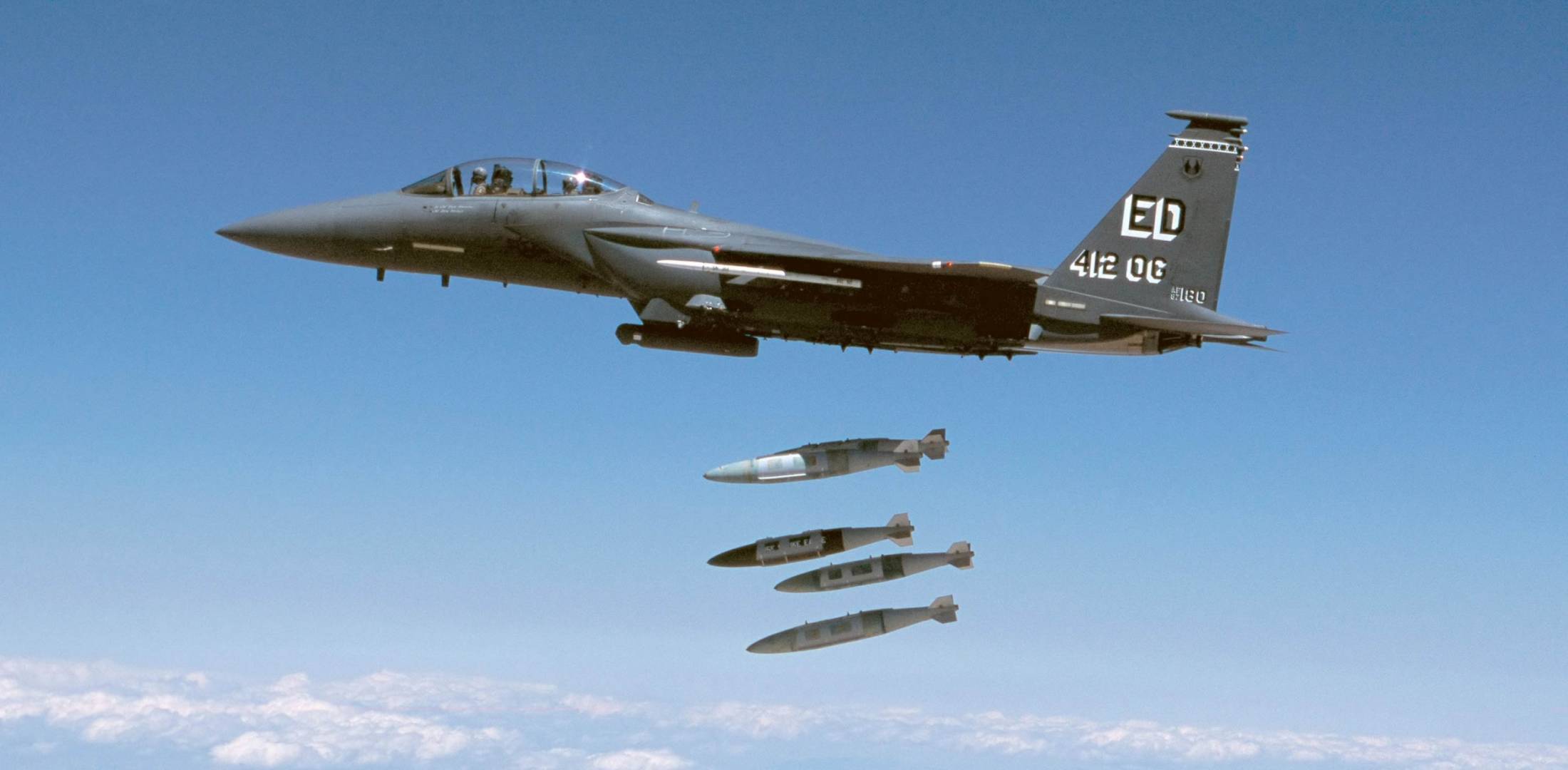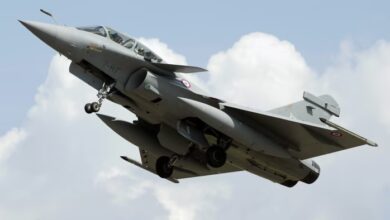More Firepower To IAF: How US JDAM Differ From The Israeli SPICE And The French HAMMER

- Even before the first Rafale jets arrived in India in 2020, sources claimed that New Delhi had placed an order for a French smart bomb known as the Highly Agile Modular Munition Extended Range (HAMMER) for the new planes.
- After the SPICE and HAMMER, it looks that another smart bomb is on its way to India. The Indian Air Force "just secured a contract" with the US to acquire the Joint Direct Attack Munition (JDAM) for its fleet of indigenously constructed Light Combat Aircraft, according to ANI.
During the Kargil war in 1999, the Indian Air Force’s Mirage 2000 jets were crucial in destroying Pakistani infiltrators’ positions. The Mirage 2000s used laser-guided bombs in this duty, with the bombs being launched after a laser beam was reflected to their targets.
Twenty years later, the Mirage 2000 was chosen to carry out the airstrike on Balakot in retaliation for the Pulwama suicide bombing. The Mirage 2000s, on the other hand, carried an Israeli-built weapon known as Smart, Precise Impact, and Cost-Effective for the Balakot airstrike (SPICE).
Laser-guided bombs were among the first’smart bombs,’ having far more accuracy than the air-launched unguided, ‘dumb’ bombs used in battles prior to the 1970s.
The laser beam in the LGBs deployed in Kargil might be lighted by aircraft or infantry on the ground.
While laser-guided bombs were and still are extremely accurate, unfavourable weather conditions like as thick cloud cover, fog, or rain might compromise their precision, and the use of a targeting laser limited the weapon’s range to only a few kilometres. The SPICE, on the other hand, is part of a newer generation of smart bombs that use many means of guidance, including satellite and electro-optical sensors, to increase range and versatility.
The Indian Air Force was aiming to integrate the SPICE weapons on its fleet of Russian-designed Su-30MKI jets months after the Balakot strike, according to sources.
Even before the first Rafale jets arrived in India in 2020, sources claimed that New Delhi had placed an order for a French smart bomb known as the Highly Agile Modular Munition Extended Range (HAMMER) for the new planes.
After the SPICE and HAMMER, it looks that another smart bomb is on its way to India. The Indian Air Force “just secured a contract” with the US to acquire the Joint Direct Attack Munition (JDAM) for its fleet of indigenously constructed Light Combat Aircraft, according to ANI.
So, how closely do the JDAM, SPICE, and HAMMER match each other?
In a technical sense, none of the three systems are bombs. It’s a set of kits that can be installed on current unguided bombs. Guidance units, fins, wings, and other components are bolted on to existing dumb bombs or even laser-guided bombs to transform them into guided, “glide” bombs that fly to their targets.
However, each of the three systems has significant variances and offers various capabilities:
JDAM
Despite the fact that the JDAM joins the Indian Air Force after the SPICE and HAMMER, it is the oldest and most basic of the three systems. The JDAM adds a new tail component to a dumb bomb that includes an inertial navigation unit, a global positioning system for satellite navigation, and tail fins.
The JDAM kit can be installed on a variety of US and allied bombs, including the 907kg, 454kg, and 227kg bombs. The fins allow it a range of over 20 kilometres, much exceeding that of most laser-guided bombs. Furthermore, satellite guidance is unaffected by most types of bad weather. In 1999, during the NATO operation in Kosovo, the JDAM was utilised for the first time in battle.
Over 400,000 JDAM kits have been delivered to the US military and 26 overseas users, according to its manufacturer, Boeing. At least 500 JDAM kits have been delivered to Pakistan for use on its F-16 fighter jets.
According to a US Navy fact sheet, a single JDAM costs “about $24,164,” which is far less than the HAMMER and SPICE. However, most JDAMs have a significant flaw: their reliance on satellite guidance. While satellite guidance is extremely reliable, countries like China have been working on ways to jam GPS signals, thus jeopardising the JDAM’s utility.
Boeing and the US military have worked together for the past decade to upgrade the JDAM, including increasing its range, making it capable of hitting moving targets, and producing a laser-guided variant.
Boeing has also developed a powered JDAM (PJDAM), which combines a JDAM kit with a small jet engine to turn a 227kg bomb into a compact cruise missile with a range of 300 kilometres.
SPICE
The SPICE’s manufacturer, Rafael, claims that the weapon has “GPS-independent” mission capability. The SPICE package, like the JDAM, has fins, wings, and a guidance system for a bomb. In addition to satellite guidance, the SPICE employs an electro-optical seeker that scans the ground for a target, which is then confirmed using the weapon’s onboard scene-matching algorithm.
The SPICE package has a range of 60 kilometres for bombs weighing 907 kilogrammes and 100 kilometres for bombs weighing 454 kilogrammes. A new SPICE variation, the SPICE 250, has also been created, which is a 113kg weapon capable of hitting targets up to 100 kilometres away.
Rafael claimed in 2019 that artificial intelligence and deep learning had been integrated into the SPICE system to improve engagement with moving targets.
HAMMER
Unlike the normal JDAM kit and SPICE, the HAMMER combines missile and glide bomb capabilities. The HAMMER is manufactured by Safran, a French corporation that claims it “adds a propulsion kit and a variety of guidance kits to ordinary bombs.” The HAMMER may work with a number of guiding systems, including satellites, infrared seekers, and lasers.
The HAMMER, according to Safran, can be launched at ranges ranging from 20 to 70 kilometres, allowing the launch aircraft to stay out of range of opposing air defences.
The HAMMER kit can be added to a variety of bomb sizes, including 125kg, 250kg, 500kg, and 1,000kg bombs, the last of which is designed for ‘bunker buster’ missions. In contrast to unpowered bombs, the HAMMER can be deployed at low altitudes or in steep terrain because it is pushed.
Large-scale economies of scale
According to a French media source from 2017, Safran was aiming to lower the price of the HAMMER from 120,000 Euros per piece to roughly 80,000 Euros per piece, which is still significantly more expensive than the JDAM.







Facebook Comments